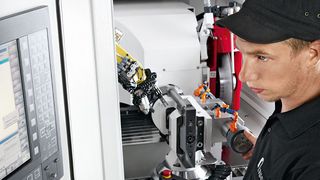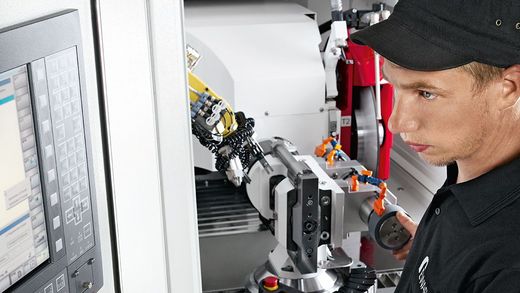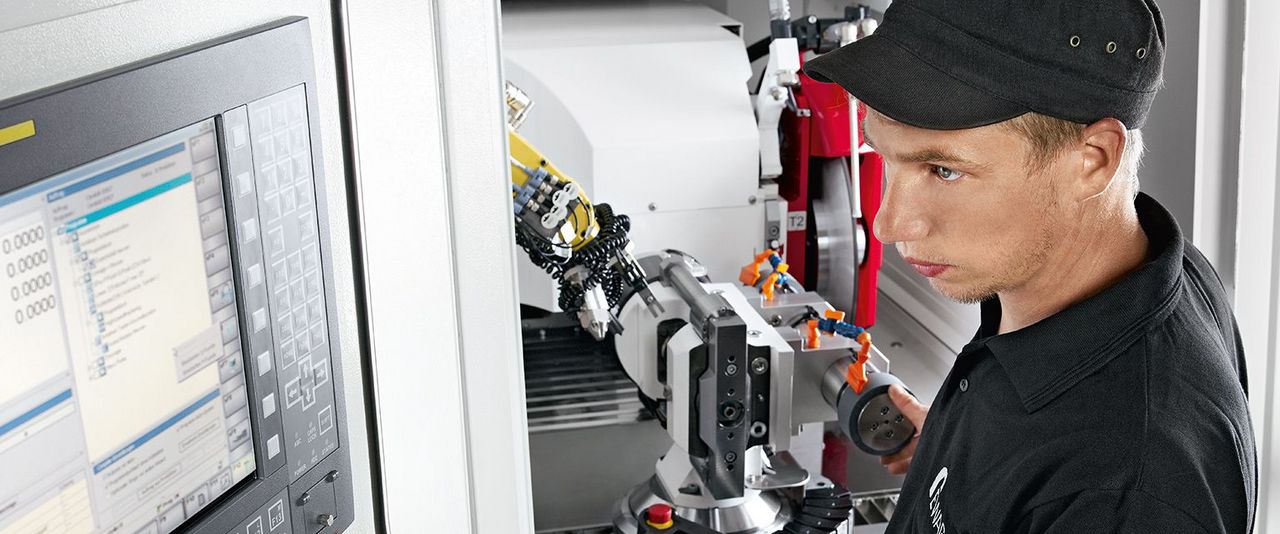The Value of Preventive Maintenance for Grinding Machines
How often have you heard this perspective from a manufacturer executive: “What we lost from the machine being down was more than the cost of the repairs.”
Or this from a machine shop floor manager: “Do whatever you have to do to get the equipment up and running.”
Equipment failure is the cause of 42 percent of unplanned downtime, according to IndustryWeek, outpacing all other factors, such as inventory issues, lack of skilled operators, and human error.
Yet few equipment breakdowns happen without warning. That’s why tracking a machine’s hours and productivity can lead to proactive repairs and maintenance, mitigating costly repairs and extending the life of the machine. The cost savings of a preventive maintenance plan have been estimated at 12–18 percent over reliance on reactive repairs.
The value of preventive maintenance can be summarized so: It’s an ongoing service that helps manufacturers improve uptime, efficiency and quality.
The Value of Preventive Maintenance from a Business Perspective
The true value of preventive maintenance is planning, which is especially important for small shops that cannot afford downtime. Preventive maintenance provides knowledge about not only the current state of equipment but also what might need to be repaired, replaced or upgraded in the near future.
How about a tangible example of the value of preventive maintenance? One UNITED GRINDING customer was experiencing increasing downtime due to equipment issues, which reached 156 hours in 2016 and 72 in 2017. The customer agreed to a three-year preventive maintenance schedule, and downtime decreased to 22 hours in 2018, none in 2019 and eight through the first five months of 2020.
Preventive maintenance is a review that covers parts and processes — a thorough quality control check that helps ensure uptime, efficiency and extend the life of the machine.
Take the Opportunity to Perform Preventive Maintenance Before Demand Returns
Market forces in manufacturing help make a compelling case for the value of preventive maintenance. While many manufacturers are experiencing reduced production demand as a result of the COVID-19 pandemic, many are anticipating a surge in orders, according to a recent Gardner Business Media survey.
There may not be a better window for maintenance and ensuring peak performance for your grinding machines. Most small manufacturers do not want multiple grinding machines shut down for preventive maintenance at the same time; they have time to schedule work over the next several months. Some manufacturers want as many grinding machines maintained as possible during slow times.
Preventive maintenance appointments also can be scheduled to coincide with other work, such as the calibration required to meet annual certification requirements on WALTER measuring machines.
Service Expertise a Key Factor When Weighing Alternatives
While the majority of manufacturers monitor grinding machine usage, some do not, instead opting for the approach of running the machine until it breaks down. Some simply say they cannot break for maintenance because they cannot afford to be without the machine for even a day. That approach always leads to more expensive repairs. It also is not unusual for a repair to take four to six weeks before completion, pending availability of parts and service technicians.
It makes sense for some large shops with many machines to operate their own maintenance departments, but that is probably not the case for most manufacturers. Many smaller manufacturers cite cost as an obstacle to preventive maintenance, especially if they undervalue the expertise of experienced technicians and compare the cost of services to what they can do internally. An internal maintenance person certainly could perform many of the steps — e.g., changing fluids, inspecting parts and adjusting settings.
But they might not recognize warning signs, such as a slightly noisier than usual $10 fan, which might be wearing out but is essential to keeping a $15,000 electronic controller from burning out. What else might be prevented by having an experienced service technician take a look at the overall health of your machines?
Preventive maintenance also has a safety component; an experienced service technician might spot potential electrical issues, which could endanger people or the machine.
Preventive Maintenance Drives Uptime, Efficiency and Quality
UNITED GRINDING recommends preventive maintenance on its machines for every 2,080 hours of usage, which is the equivalent of the machine operating one 8-hour shift per day, 5 days a week, for an entire year. If the grinder is used two shifts per day, the recommended service schedule would be every six months.
A preventive maintenance call begins with the service technician checking geometry and alignment, which will almost always result in a reduction of future scrap and help maintain higher quality output. It includes monitoring operational temperatures and vibrations, all which have unique tolerances that help minimize wear on components and machine parts. A standard preventive maintenance call includes:
- A minimum of eight hours on a machine
- Detailed checklist of as many as 90 items for inspection, which varies by machine, and includes parts, electrical components and safety devices
- Explanatory notes on what was repaired
- Recommendations for repair work
The true value of preventive maintenance commitments is partnership — service technicians committed to extending the life of machines and a manufacturer intent on getting the most from them.
Reduce costly downtime by calling 866-674-4222 to schedule an appointment with UNITED GRINDING’s service experts.









